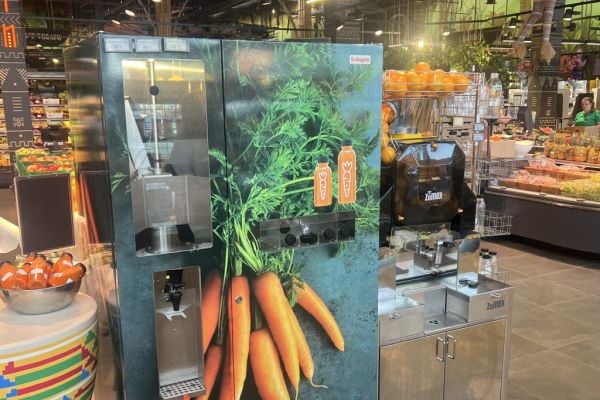ESM spoke to Euan Jarvie, EMEA President, IRI Worldwide, about the opportunities open to retailers and consumer goods firms amid escalating socio-economic and geopolitical challenges.
In February, IRI issued a major report, Beyond the Headlines: A different mindset for a different inflation, which explored how the convergence of a number of different factors, including supply chain pressures and the legacy impacts of COVID-19, were creating a 'imperfect inflation', requiring a new approach from retailers and consumer goods manufacturers.
“The outlook for this year suggests we are sailing into choppy macroeconomic waters,” IRI's Ananda Roy said at the time.
Since then, the war in Ukraine has accentuated what was an already uncertain situation, with the cost of living crisis accelerating, shortages of key commodities driving prices up, and a looming energy crisis as we head into the winter.
With this in mind, ESM recently had the chance to catch up with Euan Jarvie, EMEA President, IRI Worldwide, to discuss how the situation has evolved in the months since the report was published, and what options are open to businesses as they navigate the present environment.
"What we have now is a sort of hyper inflated, borderline recessionary marketplace, which is starting to hugely affect retailers, because consumers are making really stark choices now," Jarvie explains, adding that the issues facing the sector are not limited to one category, rather they cross the entire marketplace.
"We have looked into price elasticity – and how elastic consumers are in their choices – and what we’re finding is that in different parts of Europe, particularly Southern Europe, that elasticity is quite restricted. So, if prices shift on certain core food products, consumers will trade down, or even trade out of that category altogether.
"Consumers are having to make difficult choices about what categories they choose to trade in or out of."
Taking A 'Repertoire Approach'
As the year to date has shown, the inflationary story has a few more chapters left to play out, which in turn is likely to impact retailer inventory – pricing shifts in some categories may lead retailers to limit their exposure or streamline their offering.
This may require firms to take more of a hands-on strategy in terms of customer engagement, implementing what Jarvie describes as a "repertoire approach", rather than a standard product and price promotion approach.
"I think when we get into the winter, the cost of living, utilities and energy availability are going to be a key concern for shoppers, and they are going be asking themselves some difficult questions," he explains. "Some of the conversations we’ve had with retailers have focused on ‘maybe you need to start to think about talking to your customers around repertoires’. So, if you can’t afford to buy a particular item on your shopping list, for example, what do you trade out to?
"In practical terms, that could involve someone in store – either a physical store or a virtual store – who can communicate with the customer much more dynamically with the information and data that you have, and serve it back to them. Or, talk to them about the other opportunities you have in your supply chain."
Retailing, after all, is a "hugely complex and costly proposition", he argues, and if there is a scarcity or paucity of a particular product in a specific category, the onus is on businesses to provide consumers with a viable alternative.
"I think retailers have the opportunity to be a lot more dynamic in how they do that," says Jarvie.
Understanding The Shopper
Personalisation is likely to become more important in the event of long-lasting economic challenges, with businesses using all the tools at their disposal – whether it be their store portfolio, e-commerce platform and loyalty programme – to build a closer rapport with the shopper as an individual, rather than a representative of a demographic.
"Once they're inside of a retailer's ‘walled garden’, then there is the opportunity to personalise," says Jarvie. "Right now, if there are restrictions on the supply chain, and pressures on the cost base, that walled garden gives you enormous flexibility."
Retailers and CPG manufacturers are facing a paradox at present, he adds, in that while in the past, measuring a shopper's ability to spend was a good barometer when forecasting and planning, other considerations have since come to the fore.
"People always talk about the ‘ability’ to spend, but consumers are also now dealing with a ‘willingness’ to spend," he says. "We are constantly making choices. For example, as a Scotsman in London, I’m appalled at paying £8 for a pint! But I can afford to do it – and that’s my willingness to spend."
Willingness to spend can be defined as 'what a shopper is prepared to do', or at the same time, if they aren't, what choices are open to them? This may require food and beverage manufacturers to be more cognisant of what's taking place on a macro level, rather than within their specific category.
"Today, if I’m a soda manufacturer, my share of basket isn’t just the other soft drink manufacturers or waters, it’s snacking products, it’s chocolate products," says Jarvie. "When you consider willingness to spend over ability to spend, your competitive set expands."
Read More: The Inflation Fallout – Who Will Be The FMCG Brand Winners And Losers?
© 2022 European Supermarket Magazine – your source for the latest retail news. Article by Stephen Wynne-Jones. Click subscribe to sign up to ESM: European Supermarket Magazine.














